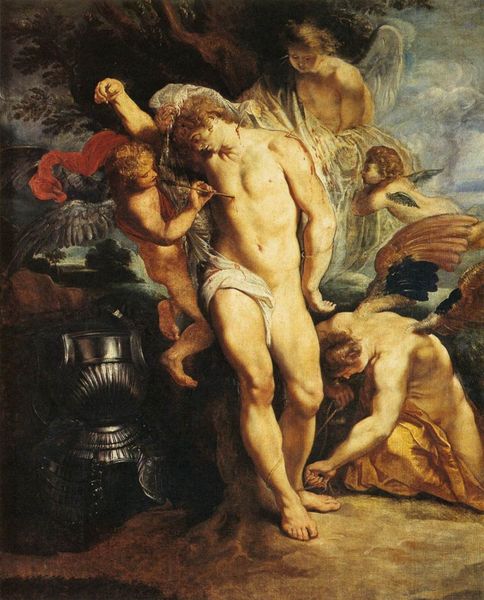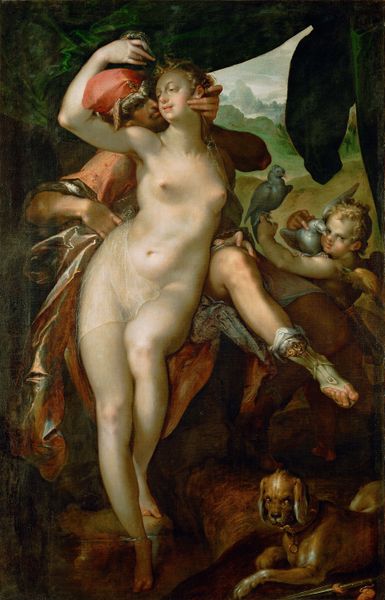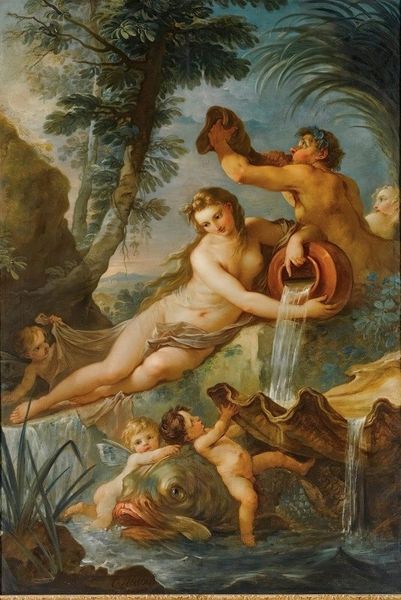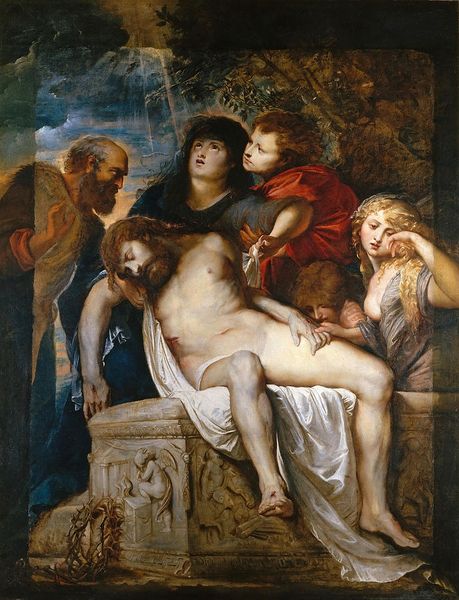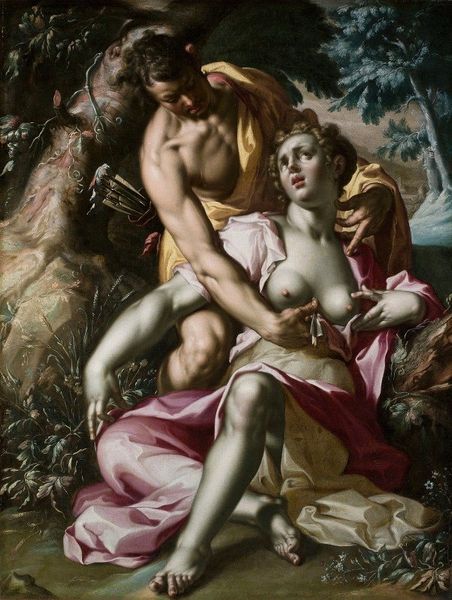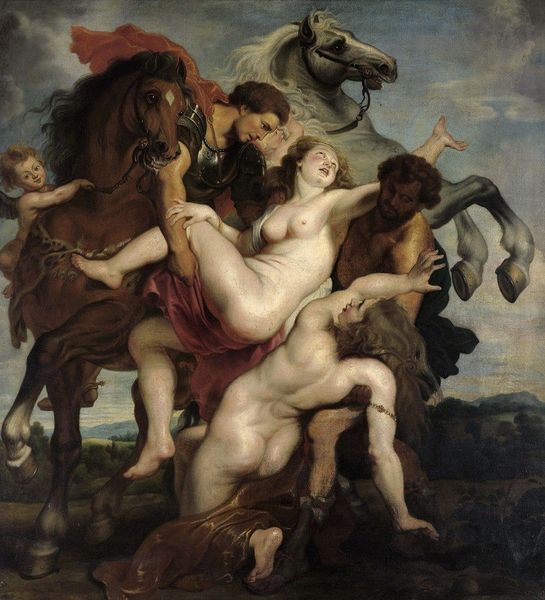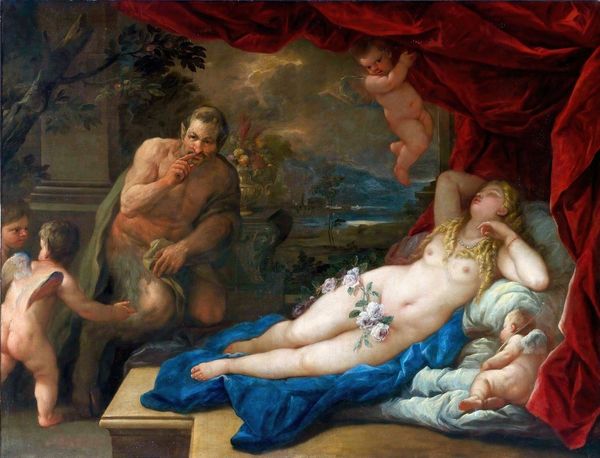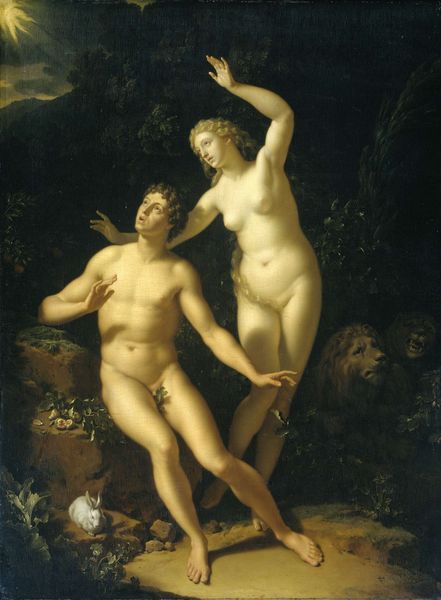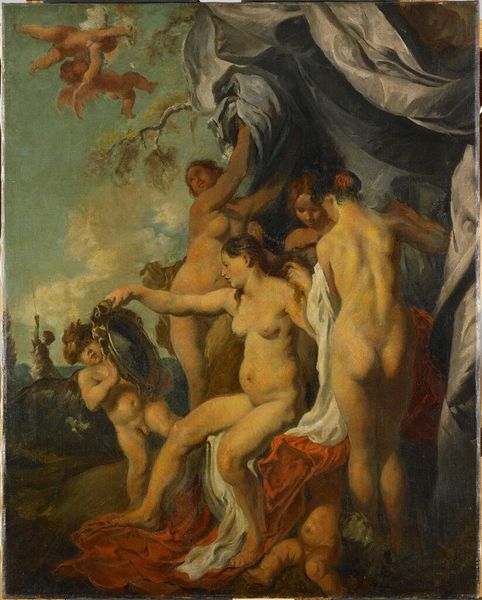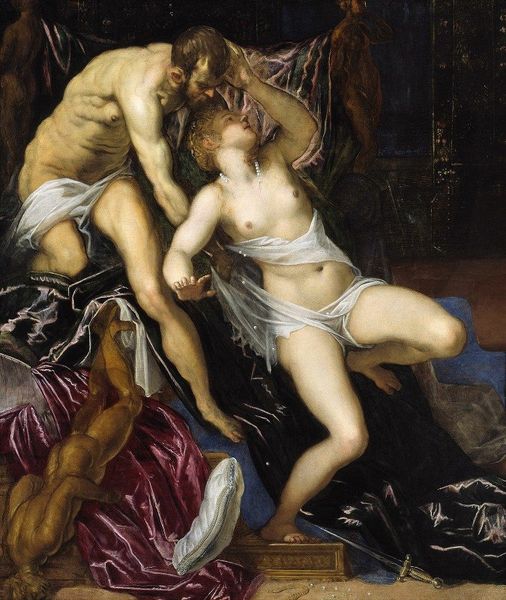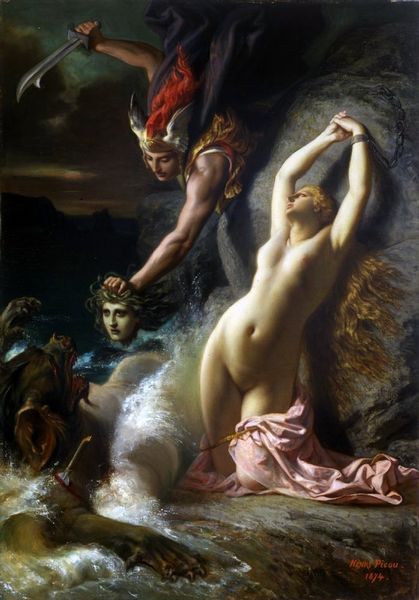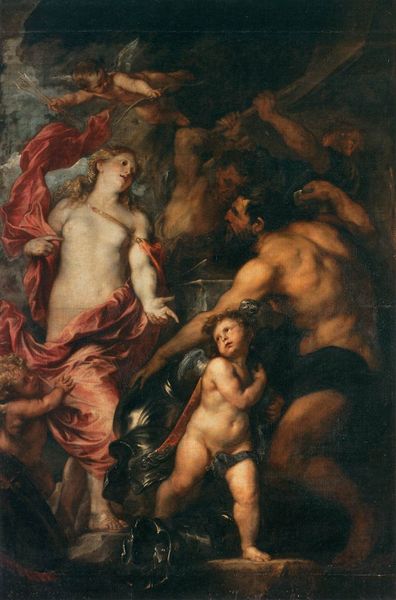
oil-paint
#
allegories
#
allegory
#
baroque
#
oil-paint
#
oil painting
#
mythology
#
painting painterly
#
history-painting
#
nude
Dimensions: 222.5 x 180.5 cm
Copyright: Public domain
Editor: Here we have Peter Paul Rubens’s "The Union of Earth and Water" created in 1618 using oil paint. It has such a… tactile quality, doesn't it? Almost overflowing with life and, well, a fleshy abundance! How do you interpret this work, what stands out to you? Curator: Oh, Rubens! He’s less painting a picture and more inviting us to a feast, isn't he? The Baroque loves its drama and movement, and Rubens doesn’t disappoint! I see the allegorical marriage of Earth (Ceres, I believe, draped in all her fertile glory) and Water (Neptune, looking quite pleased with himself). Look how the putti frolic in the water… Even a lion gets in on the bounty! Rubens’s colors are sumptuous, almost edible. You feel you could reach out and grab a grape, no? And the symbolism – well, the union speaks of prosperity, harmony… a world abundant in resources. Makes me thirsty just looking at it. How does it strike you on that front? Editor: It does! The sheer *fullness* of it all is overwhelming. But is it just about prosperity, or is there something deeper going on with this "union"? Curator: Deeper still, I think. Rubens was painting at a time of significant political and social change, wasn't he? Think about it – is this harmony reflected in reality? Or is it a yearning for a more balanced world, a dream perhaps? Food for thought, eh? Editor: That’s really interesting! I was so caught up in the immediate visual impact. I am going to spend longer reflecting on the broader historical context. Curator: Yes! And next time you are at a feast, remember Rubens, and how the simplest union can contain universes!
Comments
No comments
Be the first to comment and join the conversation on the ultimate creative platform.
